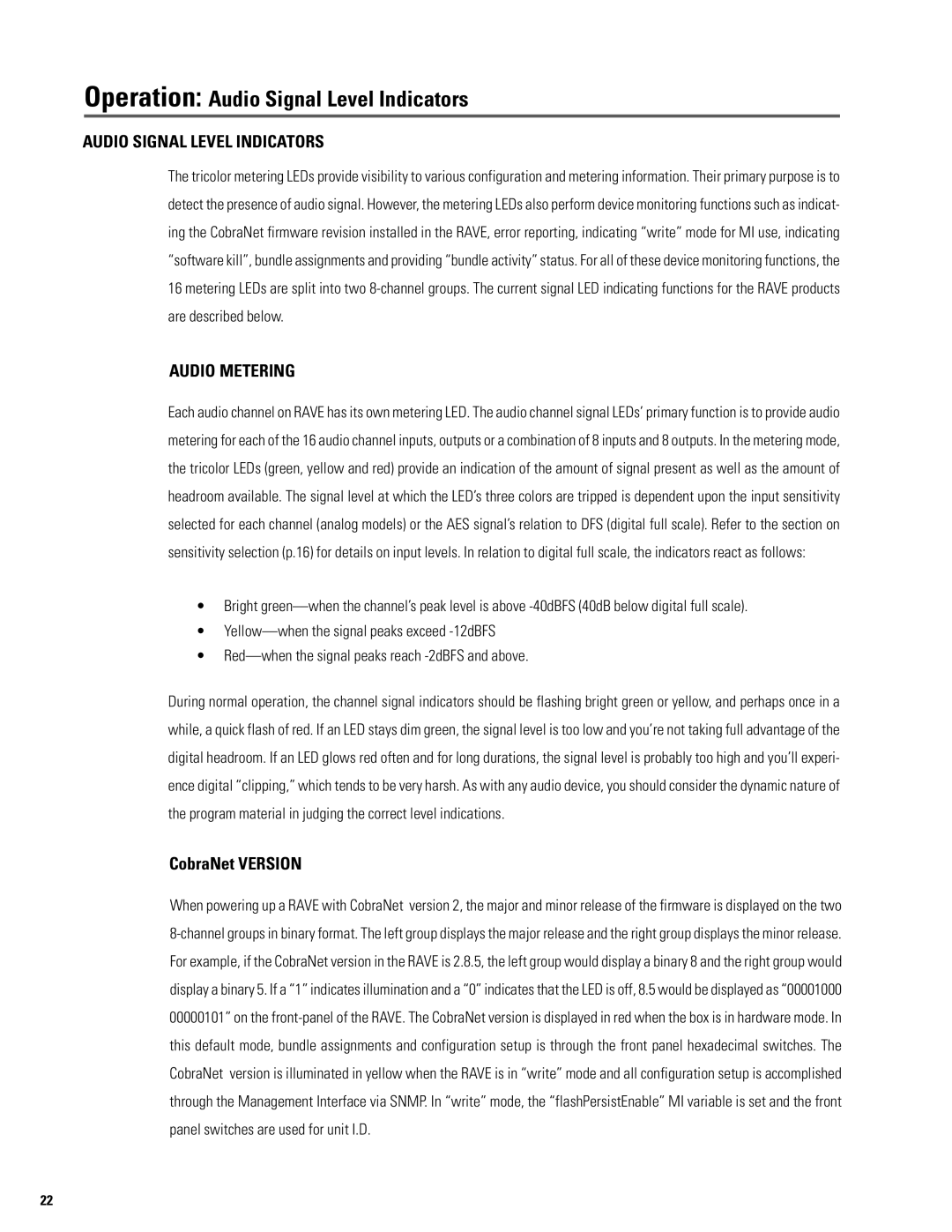Operation: Audio Signal Level Indicators
AUDIO SIGNAL LEVEL INDICATORS
The tricolor metering LEDs provide visibility to various configuration and metering information. Their primary purpose is to detect the presence of audio signal. However, the metering LEDs also perform device monitoring functions such as indicat- ing the CobraNet firmware revision installed in the RAVE, error reporting, indicating “write” mode for MI use, indicating “software kill”, bundle assignments and providing “bundle activity” status. For all of these device monitoring functions, the 16 metering LEDs are split into two
AUDIO METERING
Each audio channel on RAVE has its own metering LED. The audio channel signal LEDs’ primary function is to provide audio metering for each of the 16 audio channel inputs, outputs or a combination of 8 inputs and 8 outputs. In the metering mode, the tricolor LEDs (green, yellow and red) provide an indication of the amount of signal present as well as the amount of headroom available. The signal level at which the LED’s three colors are tripped is dependent upon the input sensitivity selected for each channel (analog models) or the AES signal’s relation to DFS (digital full scale). Refer to the section on sensitivity selection (p.16) for details on input levels. In relation to digital full scale, the indicators react as follows:
•Bright
•
•
During normal operation, the channel signal indicators should be flashing bright green or yellow, and perhaps once in a while, a quick flash of red. If an LED stays dim green, the signal level is too low and you’re not taking full advantage of the digital headroom. If an LED glows red often and for long durations, the signal level is probably too high and you’ll experi- ence digital “clipping,” which tends to be very harsh. As with any audio device, you should consider the dynamic nature of the program material in judging the correct level indications.
CobraNet VERSION
When powering up a RAVE with CobraNet version 2, the major and minor release of the firmware is displayed on the two
22
